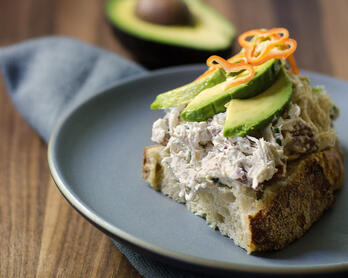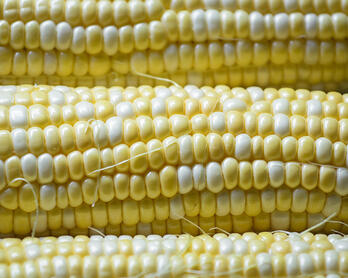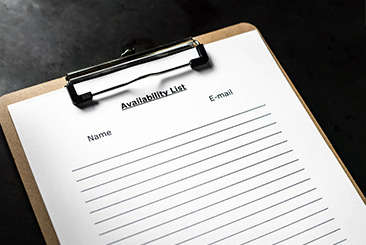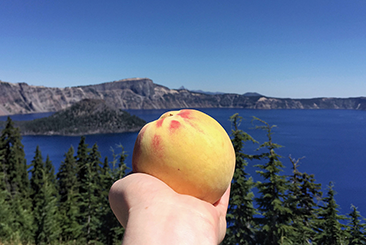Potato Hash with Fava Beans, Green Garlic, and Leftover Short Rib

Full disclosure - This egg was fried a little too long. Though it was still runny, you generally don't want it to look quite this "cooked".
About a month ago, Rob and I went out for dinner and ended up with a box of leftover porcini-rubbed steak. Letting something that delicious go to waste would be a crime punishable by a year of bad coffee <shudder>, so the next day I sifted through my random assortment of ingredients in the hopes of assembling a meal. I had the basics - potatoes, onions, eggs - and decided to go with an easy potato hash.
To put some spring in our dinner's step, I threw in fava beans and a small bunch of green garlic. When green garlic is in season, I make it a point to always have some on hand. It's sweeter and milder than mature garlic and can give a subtle boost to just about any savory dish. On the flip side, I hadn't ever cooked with favas until this recipe. Not only does their creamy texture and nutty flavor shine in a simple potato hash, but shelling broad beans is pure cooking zen. An empty brain is a happy brain. My spring hash was such a hit that I made it again this past weekend with the same ingredients, substituting leftover short rib from Belcampo for the steak.
Once you master the basics of home fries, it's easy to add a wide variety of leftovers to them. The key is achieving a crispy exterior and fluffy interior and that boils down to food science. So many food puns, so little time.
Updates
In terms of adjustments, I found that the potatoes didn’t stay as crispy as I would like when the onion mixture and veggies were added. I’ve included a couple of simple steps to help with this issue.
Fava Beans
Fava beans have two layers that need to be removed - the pod plus a waxy outer coating on the bean itself. Most sites suggest removing the beans from the pod, blanching the beans for 30 seconds, then dunking them in an ice bath to stop the cooking process. It makes the waxy coating "slip right off". I skip the blanching step because a) I didn't know any better when first using fava beans and b) don't feel like creating more dishes for myself at this point. Plus, fava beans cook very quickly and I worry that blanching might result in beans that are overcooked after the sauté. And to complicate things further, if it's early in the season and the fava beans are young, you can apparently cook the entire pod. Rob and I stopped into Gjusta over the weekend and they had a side salad that was grilled whole fava pods with shaved Pecorino. In any case, chef's discretion.
Crispy Potatoes
Ingredients and Method
When it comes to getting the right potato texture, I've taken my cues from Cook's Illustrated and Serious Eats. The cooking technique and type of potato you use both matter, though in my experience the cooking technique is what makes or breaks the recipe. I tend to add whatever potatoes are laying around - Russet, Yukon Gold, heirlooms from Weiser Family Farms - and end up with great hash (maybe I've just been lucky with the spuds).
In Hot Water
The step that shouldn't be skipped is parboiling the potato cubes. It's a pain to dirty an extra pot, I know, but the difference is striking. I was in a hurry for the meal in the above photo and threw the potatoes right into the pan without boiling them. They tasted fine enough but didn't have the same caramelized and crispy exterior that I've come to enjoy. The difference in mouthfeel and flavor is big so learn from my ill-advised shortcut and give your potatoes a bath.
The Science
Why is parboiling so important? It's all about transforming the starch, which is another reason why the type of potato you use can impact crispiness. As the heated water works its way into the potato cubes, the starch molecules begin to expand. Now, if you go beyond the "just boiling" point (see "Instructions"), the molecules will burst resulting in a loss of starch power. The goal is for the starch to be pumped up, gelatinized, and ready for action when the potatoes hit the hot oil/fat. As a side note, soaking potatoes in room temperature water won't help with crispiness since it doesn't effectively alter the molecular structure of the starch.
Tools
Ingredients (Inspired by Cook's Illustrated)
- 2 1/2 tablespoon olive oil
- 2 tablespoon butter, cut into two pieces
- 1 1/2 pounds Yukon Gold or Russet potatoes, 1/2-inch cubes
- 1 cup shelled and peeled fava beans (about 2 lbs of beans) Note: See fava bean tips above.
- 1 1/2 cup small chop yellow onion (about 1 large)
- 2 teaspoons finely chopped green garlic, white part only
- 1/2-3/4 teaspoon paprika
- 1-2 eggs per person
- Leftover meat of choice Note: Mushrooms would be an excellent substitute for the meat if you want a vegetarian potato hash.
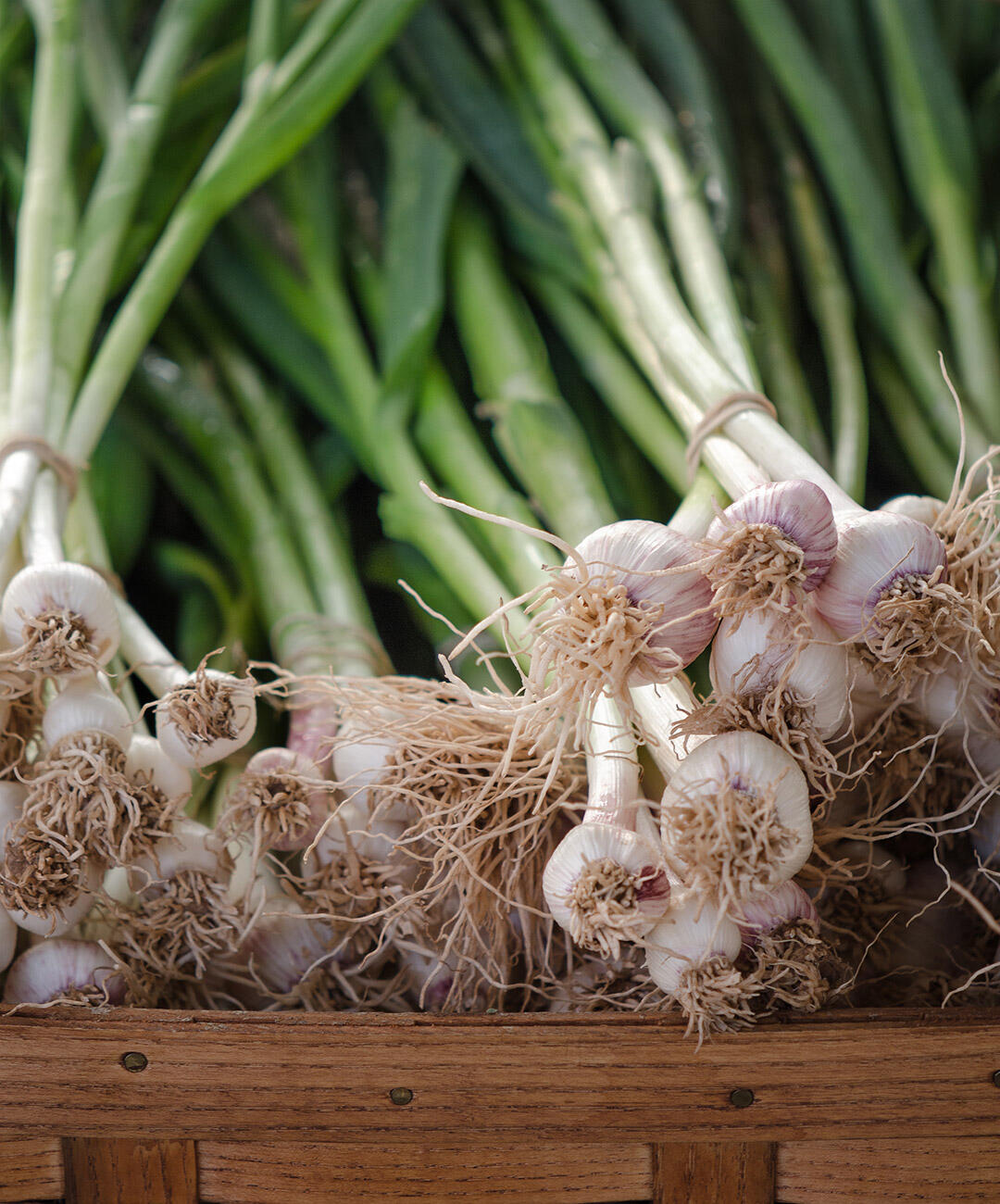
Green garlic at Schaner Farms - Santa Monica Farmers Market
Instructions (Inspired by Cook's Illustrated)
Prep
- Before turning on the oven, prep the fava beans, potatoes, and remaining ingredients.
- Place the diced potatoes in a large pot and add just enough cold water so that they are are covered.
Sauté
- Preheat the oven to 300 degrees and then line a baking sheet with aluminum foil and parchment paper. Place the lined baking sheet in the oven.
- In a 12-inch non-stick pan, heat 1 tablespoon olive oil over medium-high heat until shimmering.
- Add the onion plus a pinch of flake-style salt, then sauté until slightly caramelized (about 7 minutes).
- Add the minced green garlic and paprika, stir until fragrant, then transfer the onion mixture to a plate and set aside.
- Wipe the pan clean.
Parboil
- While the onions are working, bring the potato cubes and 1 teaspoon of flake-style flake-style salt to the brink of boiling, then immediately drain the potatoes. Note: As mentioned under "Crispy Potatoes", don't continue cooking your spuds. I line a plate with paper towels and then spread the potatoes out on the plate to ensure that they're thoroughly drained.
Sauté
- In the 12-inch non-stick pan that you wiped clean, heat 1 1/2 tablespoons olive oil + 1 tablespoon butter over medium-high until the butter foams.
- Cook potatoes for 15-20 minutes, tossing and turning them every 4-5 minutes to ensure even browning. Note: Avoid turning the potatoes more than every 4-5 minutes or they won't brown up properly.
- Transfer the potatoes to the hot baking sheet, leaving 1/3 of the sheet empty for the veggies. Put the baking sheet back into the oven.
- Over medium to medium-high heat, add the onion mixture and fava beans to the pan. Cook until the fava beans are tender (about 5 minutes). Toss the veggie mixture with the leftover meat and transfer it to the empty section of the baking sheet in the oven.
- Wipe the pan clean.
Fry
- In the same non-stick pan, heat 1 1/2 tablespoons of butter over medium high until foaming.
- Gently crack your eggs into the pan and fry.
Plate
- While the eggs are frying, take the hash out of the oven, gently toss the potatoes, onions, and veggies together, season to your liking with flake-style salt and pepper, then plate for serving.
- Transfer the fried eggs to each mound of hash.
- Top with a little flat-leaf parsley for additional color and flavor then season the eggs with a pinch of flake-style salt and freshly ground pepper.
Additional Sides
I serve leftover potato hash with homemade sourdough toast. If you're an aspiring bread nerd, all of my bread notes can be found here, or you can check out the post How to Make and Maintain a Sourdough Starter.

